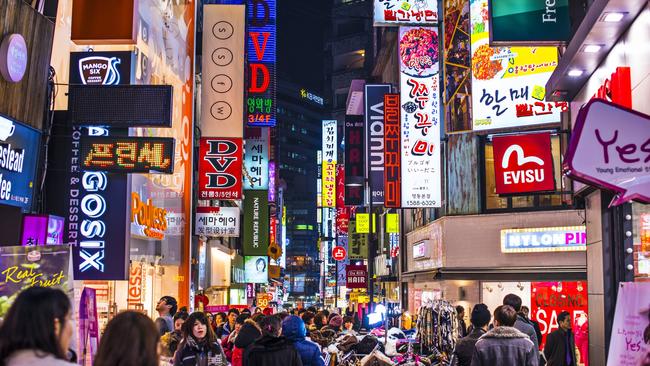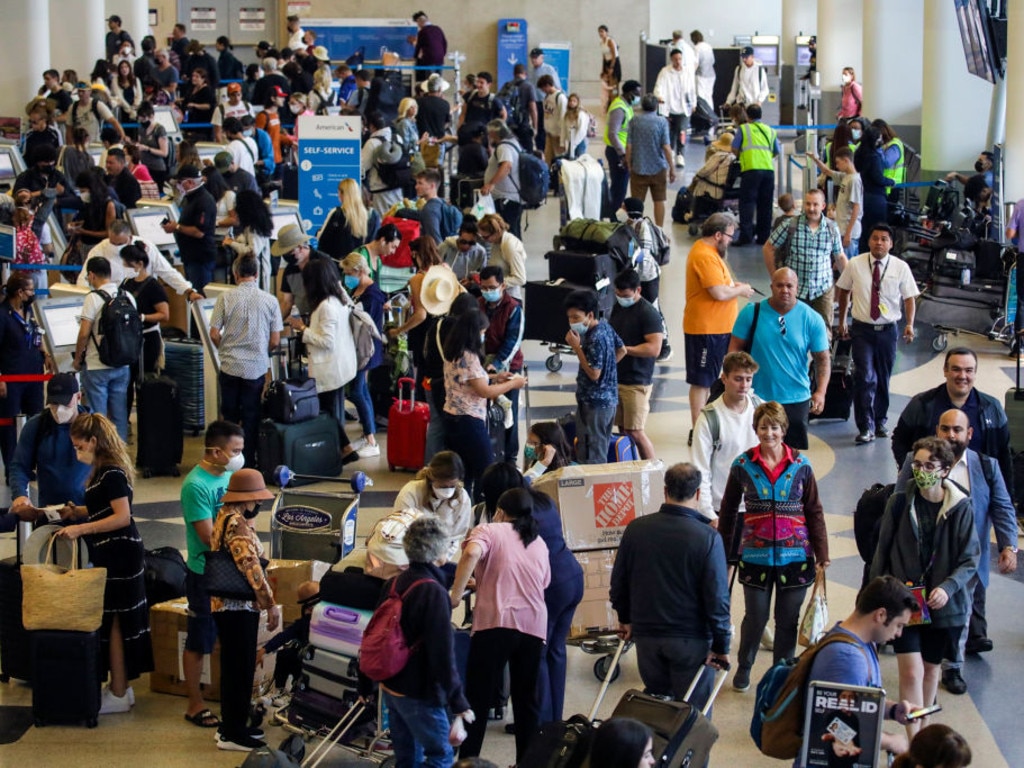Things to do in Seoul on a stay at Four Seasons Hotel Seoul
Traditions run deep in South Korean culture but there’s plenty of modern magic to be had on a trip to the capital.

For my first-ever morning in Seoul, I’m dressing up in hanbok. The word, which means “Korean clothes”, encompasses thousands of years of evolving design. The chima is a voluminous skirt while the jeogori (jacket) once measured 60cm in length but, by the early 20th century, had shrunk to just 20cm. It’s secured with a goreum (one-looped bow).
These garments give women a silhouette that’s both distinctive and modest, fitting right in with Neo-Confucian ideals that women shouldn’t show their skin or body shape. It’s not the most practical outfit to wear on a hot day in the South Korean capital but I’m not letting that stop me from heading to a hanbok rental store so I can look the part and channel the vibe while exploring nearby Changdeokgung Palace, built in 1405 and World Heritage-listed partly because its design harmonises with the surrounding topography.

The rental store assistants have this dress-up process down to a fine art; all you need to do is pick out a chima in your favourite colour and pattern (I choose a plain jacaranda-hued skirt) from the racks and they match it to a jeogori, pop you into a dressing room, hand you a hooped underskirt and help with assemblage. Once kitted out, I sit at a dressing table as plaits are woven into my hair and embellishments such as flowers, ribbons, pins and pearls are poked and prodded into the arrangement. I skip the low white heels to stay in my sneakers, grab a matching handbag and head off to see the sights. Floating around looking like a ballerina who’s escaped from twirling endlessly within a music box is surprisingly fun; now I understand why “hanbok” was added to the Oxford English Dictionary in 2021.


At the palace, many other visitors, including families and couples, are similarly kitted out. The men’s outfit includes a tall hat that once accommodated a topknot. The government is also doing its bit to promote the wearing and enjoyment of hanbok, designating October 21 as Hanbok Day. Although dressing up is great escapism and a popular activity, I return the rental a little early so I can embark on an eating odyssey.
Seoul is vast – home to about 10 million people so where to start? There’s nothing like following the culinary tips of a popular show such as Street Food: Asia; just look for the Netflix placards dotted through Gwangjang Market, famous for street foods and snacks. Heading up a staircase away from the ground-floor bustle, I poke my metal chopsticks into a plate of yukhoe (beef tartare) and try to grip a piece of still-wriggling raw octopus. Another stall is dedicated to potatoes, frying up waist-ballooning cheese potato pancakes (I really need to be back in my hanbok) and selling potato beer. One of the most TV-famous stalls features older ladies in headscarves and pink pinafores rolling out dough before turning it into kim chi mandu (dumplings) or bouncy, chewy kalguksu (hand knife-cut noodles) that are slurped from a gigantic bowl of broth.

It would be easy to grab something sweet and colourful to finish, such as a cup of diced tropical fruits, but I’m saving space for a fantasy dessert. Nudake is a high-art bakery chain spawned by luxury eyewear brand Gentle Monster. Each outlet (two in China, three in Seoul) is an artwork in itself: the Seongsu outlet solemnly presents its surreal “cake sculptures” on a large circular table as though they’re museum exhibits. They’re indeed worthy of long contemplation: the “cauli cake” resembles a head of cauliflower crowned with a burst of “asparagus”, and the outlet’s signature “burger cakes” are tempting, but I’m drawn to the tomato cake, a re-creation in jelly of a single tomato, which I pair with a latte flavoured with black sesame.
To work off the extreme caloric intake, I explore the formerly industrial neighbourhood that once made shoes. Nowadays it’s packed with quirky boutiques, repurposed warehouses, haute couture concept stores, coffee bars, selfie photo studios, K-beauty shops – and more bakeries. For the hottest retail destinations, expect to join a queue.
Closer to my hotel is buzzy Myeong-dong (“dong” means neighbourhood), renowned for its shopping, street snacks (everything from grilled chicken feet and fried coconut shrimp to Oreo churros) and flagship stores of brands such as Emis (beloved for its baseball caps and bags, and celebrity customers such as members of K-pop supergroup Blackpink). I’m not planning to buy K-beauty products but somehow end up inside a heaving branch of Olive Young, throwing packets of snail-secretion, acai, rose and yuzu face sheets into a basket (employees can barely keep up supply to the shelves). Combine these treatments with a reviving scrub and soak in the hot pools back at the hotel and the years practically fall right off you.

Not that any beauty enhancement is required if you’re dining at Hanok Grace, a barbecue restaurant in the Seodaemun district. Within the rustic timber beams of a hanok (traditional house) is an interior so dazzling you won’t know where to look (but it won’t be at your dining companions). Apart from the floor, every surface sparkles with either tiny lamps or intricate mother-of-pearl decorations. As our table fills with meats and sides (including an eye-opening gyeran-jjim – savoury steamed egg custard), we make a toast with beer-soju cocktails.
Seoul’s drinking culture is legendary. When you’re done exploring the city’s small-bar scene, wind down at the Four Seasons’ Charles H, a speakeasy tucked behind an unmarked door and a regular on Asia’s 50 Best list, or flop at Oul. Here, head bartender Ike Ryu has mined childhood memories, incorporating nostalgic ingredients such as banana milk into something altogether more grown-up.
In the know
The art-filled Four Seasons Hotel Seoul, located near Gyeongbokgung Palace and the National Museum of Korean Contemporary History, has rooms from 650,000 won ($708) a night, plus 10 per cent VAT.
Korean Air flies from Sydney and Brisbane direct to Seoul (Incheon). Three hours of hanbok rental from Hanboknam Premium is 45,000 won ($49).
Katrina Lobley was a guest of Four Seasons.
If you love to travel, sign up to our free weekly Travel + Luxury newsletter here.




To join the conversation, please log in. Don't have an account? Register
Join the conversation, you are commenting as Logout